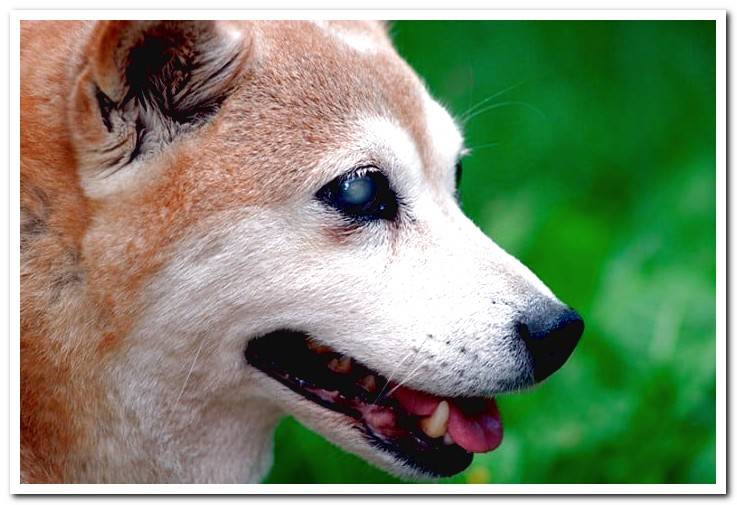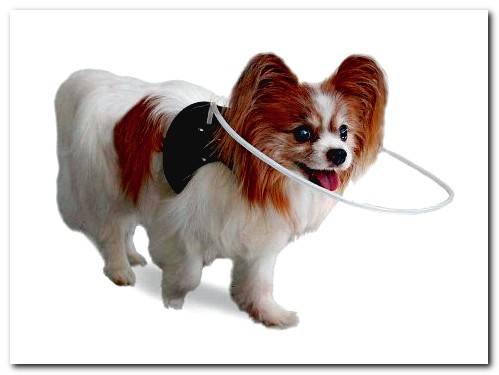
Knowing the care of a blind dog is essential if you have a canine companion with this limitation, either blind from birth or who has lost sight due to illness.
Below, you will discover what precautions you should take into account at home, as well as the special attention required during walks and other essential tips to give your puppy a happy life.
Index of contents
- 1 How do I know if my dog is blind?
- 2 Care for a blind dog
- 2.1 Condition the home
- 2.2 Don’t change the furniture
- 2.3 Safe walks
- 2.4 Positive stimuli
- 3 What if my dog is blind from birth?
- 3.1 training
- 4 Blind Dog Harness
- 4.1 Suitable games
- 4.2 Establish a routine
- 5 Avoid overprotection
How do I know if my dog is blind?
Blindness in dogs can occur from birth, when there are genetic malformations in the eye. In these cases, the dog is born with limited vision that worsens over time.
Not all dogs are blind from birth, some lose vision due to age, while in others blindness is the result of various diseases, such as glaucoma or progressive atrophy of the retina.
In both cases, the best way to know if your dog is blind is by observing its behavior. These are some of the warning signs:
- The dog trips over objects.
- You have a hard time finding your food containers, even when you have them in front of you.
- Demonstrates clumsiness in dark environments.
- You have spots in your eyes.
- Move cautiously away from home.
- He turns his head repeatedly when you call him, since he has trouble identifying where you are.
- The eyes tear frequently.
- Absence of photomotor reflex.
Do you suspect that your dog is blind? See your vet to confirm this diagnosis.
Care for a blind dog
A dog that has lost its sight due to illness becomes insecure and fearful at first, it is your job to regain confidence and lead a quiet life.
Blindness in adult dogs involves making some changes to the home routine to provide your dog with a safe environment where he feels comfortable. Here are some tips for caring for a blind dog:
Condition the home
Stairs, steps, railings, flower pots and other objects, in addition to the pool, can become a danger to your dog in his new condition. Blocks access to stairs And anywhere your dog can trip and fall, there are different gates and fences that are easy to install, even without construction.
Place the planters and side tables leaning against the wall, this way, you will free the corridors and prevent your dog from tripping over them. Also, remove any pointed objects from its reach.
When you need to leave the house, you may need to restrict your movements around the house to avoid getting hurt. One option is to locate a space that is a bit wide, but away from dangerous objects, where you can install the protective mesh. Preferably this place should be where you keep your food and your bed.
Don’t change the furniture
If your dog has gone blind, it is best not to modify the distribution of furniture and household objects. He may stumble across them at first, but this process will be easier for him if the furniture stays in the same place he knew it to be.
In case you adopt a blind dog, guide him through the house for the first few days, always using a leash. It allows you to sniff at ease and prevents you from walking it alone until you get used to the location of objects.
Remember to keep food and water containers in the same place, as well as the dog’s bed. Preferably, in a space in the house where it is not disturbed by frequent noises.
Safe walks
The strap is essential to go for a walk, this way you make sure that it stays next to you and it will be easy to guide it.
In dogs that are not blind from birth, walks cause anxiety, it is recommended that you get used to their new condition by walking close to home for a couple of weeks. As you feel more confident, widen the range of your walks.
Do not allow other people to pet your dog on the street You may be scared and react negatively. Before petting him, talk to him so he knows you will get closer. Take the walk slowly and establish a routine in terms of places, familiar smells will give you peace of mind.
You should only remove the leash and harness when you are in a safe area where the dog answers your call. If there are too many people or pets, avoid leaving him alone.
Positive stimuli
Despite his blindness, your dog can continue to play and interact with other people or pets, always taking care to speak to him before approaching. Give him opportunities to continue to meet familiar people and dogs, so you will enrich his life.
In addition to his usual toys, he acquires others that allow him to further develop his sense of hearing, such as balls with bells or dolls that make sounds when pressed.
What if my dog is blind from birth?
The care of a dog blind from birth is similar to that of an adult dog, but you must add some elements.
training
Training is important for any pet, but a blind dog requires special emphasis on commands intended for your safety. “Stay”, “wait” and “sit down” will be very useful to prevent you from approaching dangerous places.
Likewise, teaching him to respond to his name and return to you when you call him, will give you confidence to take him to parks.

Blind Dog Harness
The blind dog harness is made up of a vest and a metal or plastic bar located around the head. Thanks to this article, you will prevent your dog from hitting his face when tripping. It is a good choice when you take it to a new place, like a vacation trip.
Suitable games
It is mandatory for a dog blind from birth to have toys that make sounds This is the only way to have fun looking for objects.
If you have other pets at home, consider putting a rattle on their collars, so your blind dog can easily locate them and not jump when they get close to him.
Es
tablish a routine
The routine is essential for the lives of dogs, the blind are no exception. Establishing a schedule for meals, games, walks and rest will give your dog peace of mind.
Avoid overprotection
Caring for a blind dog does not mean you should overprotect it. With the proper training, care at home and during walks, and lots of love, your dog will be able to develop like any other and lead a normal life.
Regarding food, blind adult dogs or puppies can have the same diet as other dogs, taking into account their age and breed (small, medium, large). Similarly, go to the vet for an annual review or when you notice a change in behavior.
